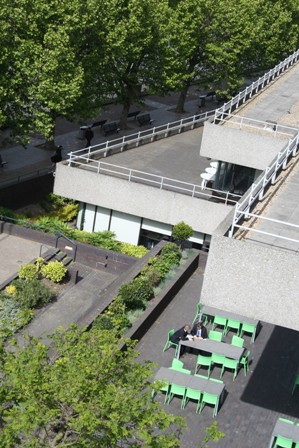
Culture is central to quality of life
Edition number 20; dateline 29 May 2009
Creating culture with Le Corbusier
I suppose I shouldn’t have been surprised to hear Hazel Blears refer to the Unité d’Habitation in Marseilles, particularly when she was speaking about issues of urban design and ‘place-making’, but I was. With her political career apparently circling the drain, I had not expected to be listening to her at all but she duly arrived and bounded eagerly onto the stage to do her bit for the launch of the government strategy for the creation of world-class places (of which more elsewhere in this issue). Having been hoping to find a strategy for the public realm with an understanding of community and culture at its core, I had not had much to engage my attention up to that point and so a casual reference to Le Corbusier had caught my ear.
Charles-Edouard Jeanneret had been much in my thoughts at the time. Only a week or so prior to my date with Ms Blears my personal directeur sportif had left me to my own devices in London’s Smithfield and I had wandered down to the Barbican for an exhibition titled The Art of Le Corbusier. It proved an education on several fronts. As someone whose weeknight routine generally sees them in bed before Jeremy Paxman has got his make-up on, I was delighted to discover that late-night Thursdays were still drawing a significant, but not crowding, audience. All those assemble except me would probably not have needing telling that Monsieur Jeanneret and Le Corbusier were in fact one and the same but I was fascinated by the explanation of the links between Le Corbusier’s work as an artist and his work as an architect. While the black and white film of Le Corbusier standing over a large-scale map of central Paris and chopping out great swathes of the historic heart of the city with a thick marker pen to make room for his vision of a new high-rise capital was something of a shock, the theme of leisure, culture and theme running through his work was fascinating.
Ms Blears had referred to Le Corbusier in the context of the post-war high-rise experiments that had been seen as a solution to the enormous demand for housing in the 1950s and beyond. We had been promised streets in the sky, she noted pointedly, but they did not quite work out as the architects and planners had hoped; they were not the Unité d’Habitation. I had hoped that she would then go on to make a point about the role of culture in Le Corbusier’s approach to design but the moment was lost and we were left, as so often, to infer that Le Corbusier’s theories were just not up to the task in practice.
The exhibition at the Barbican suggested that other conclusions were possible. One of the key point about the Unité d’Habitation is that leisure, culture and sport are central to its success. Built in 1952, the twelve-story block is one of the few examples of Le Corbusier’s work where his ideas were fully embraced. Unité d’Habitation has a rooftop garden and swimming pool, a gym, a nursery, two centres for the elderly and several shopping floors dedicated to the needs of its 1,600 residents. The tower is still a highly desirable address. Where those seeking to replicate the success of Unité d’Habitation seem most commonly to have gone wrong is to misunderstand the relationship between structure and culture. Le Corbusier sought to provide people with all that they needed to lead stimulating and fulfilling lives right on their doorsteps. Residents’ leisure, cultural and sporting interests were not ignored. Those seeking a solution to a huge demand for housing and restricted public finances chose to adopt the high-rise approach while avoiding the expense of everything that makes a place ‘liveable’.
Evidence of the misinterpretation of Le Corbusier is easily found, not just in the towns and cities of the UK but all over Europe and the rest of the world. But Unité d’Habitation works and the Barbican, still one of the most sought-after (and hence expensive) addresses in London, works. The government’s new strategy for world-class places is to be applauded for its recognition of quality of place as a vital aspect of its desire to improve the quality of life for those of us who might not be able to afford to live in the Barbican but it seems as though they too have missed a vital point. Any kind of sustainable and viable future for our towns and cities has to embrace an increase in density of habitation. It can be done but you have to put culture at the centre of the plan for it to work.
Jonathan Ives
Editor
letter from the editor
The Leisure Review editorial
